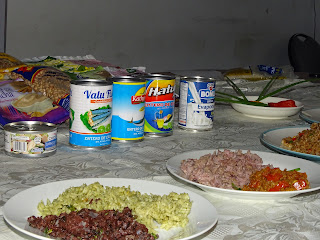It’s not exactly rice, so what is it?
PIURA REGION, Peru – More than 80 thousand students recipient of
Qali Warma (from Quechuan, Strong Child) complementary feeding programme
started to consume a type of fortified rice that promises to face the anemia,
to improve the organism’s function, to reconstitute bones and tissues, and to
strengthen the immunologic system. The food will be in breakfasts and lunches
provided by the initiative. The fortified product is made from the rice flour what
is added with eight vitamins, iron, and zinc. From the formed mass, simil
grains are made.
Qali Warma
and its promotional organism, the Peru’s Ministry of Social Development and
Inclusion, released no more medical and scientific information about the fortified
rice. However, it reported 113 tons were
delivered in 865 schools in Amotape, Castilla,
Catacaos, Colán, Cura Mori, El Arenal, Ignacio Escudero, La Arena, La Huaca, La
Unión, Lancones, Las Lomas, Piura, Sechura, Tamarindo, Tambogrande, and Vichayal Districts, all in Piura’s coastal
zone.
Piura
Territorial Unit’s Chief Sandra Castillo Abarca eexplained that the rice
fortification with multiple mycro-nutrients is an effective strategy to
increase the ingestion of essential vitamins and minerals in students population, for they
to be much awake during the classes, improving their learning. The grain is
fundamental in a big part of the Peruvian meals, despite nutritionists have
warned its proteic contribution, in its natural form, is little, and it rather contains
much carbohydrates,.
Qali Warma
delivers other iron-riched products as
grated of blood, liver, and chicken gizzard, fish, beef, pork, turkey, and
chicken, which provide proteins and minerals to the students. Also, flours of
maca, bean, cañihua, purple corn, dry potato, among others, those have allowed
to diversify the menu at schools.
Photo provided by
MIDIS.




Comentarios
Publicar un comentario